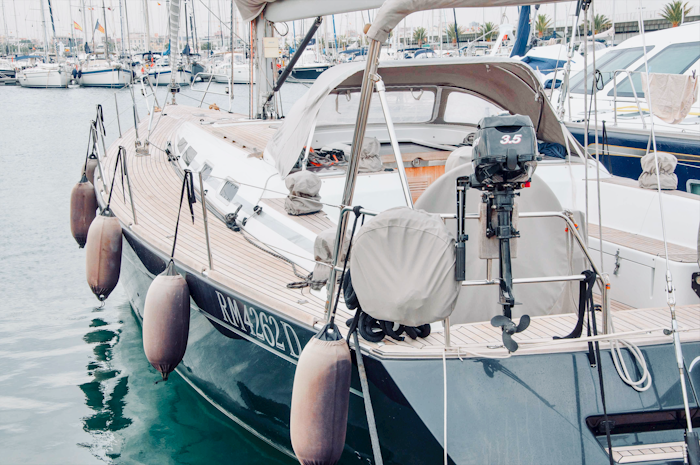Fender Up for Safety: Choosing Between Pneumatic and Foam-Filled Fenders
Protecting your vessel from the inevitable bumps and bruises of docking and berthing is paramount for any boater. Fenders, those inflatable or foam-filled cushions that hug the sides of your boat, are your first line of defense against costly damage.
But with the multitude of options at your disposal, choosing the correct Fender for your application can prove to be a difficult decision. This article dives into pneumatic and foam-filled fenders. It explores their pros, cons, and best uses. This will help you choose the right ones for your boating and shipping needs.
Understanding the Airbags of the Boating World: Pneumatic Fenders
Imagine a giant, inflatable pillow for your boat. That’s essentially what a pneumatic fender is. Made from durable rubber or PVC, these fenders are filled with air, creating a compressible barrier that absorbs impact. Their inflatable nature allows you to adjust their firmness based on your needs, making them suitable for various boat sizes and docking scenarios. Let’s take a look at some of the advantages.
Advantages:
· Adjustable buoyancy: Inflate or deflate your fenders to match your boat’s weight and the expected impact force based on the overall calculations.
· Portable and Less Weight: These inflatable fenders are easy to store because they are portable and compact. Boats and ships have limited space, so these fenders are a good choice.
· Conform to boat shapes: Their inflatable nature allows them to mold around uneven surfaces, providing better protection.
· Cost-effective: Generally, less expensive than foam-filled fenders of comparable size.
Disadvantages:
· Susceptible to punctures: Accidental nicks or tears can deflate the Fender, rendering it useless.
· Requires regular maintenance: You need to periodically check air pressure and top up as needed.
· Not ideal for extreme conditions: The air inside can expand or contract in extreme temperatures, potentially affecting performance.
The Unsinkable Physics of Foam-Filled Fenders: A Perfect Choice
Foam-filled fenders, as the name suggests, are packed with closed-cell foam, providing a firm and unyielding barrier against impact. Unlike inflatable boats, they need no maintenance and can’t be punctured. These traits make them popular with boaters who want reliability and peace of mind.
Advantages:
· No tension of puncture: These types are very good for accidental punctures and leakages, so you need not worry about them when using them.
· Low maintenance: No inflation or pressure checks are required.
· Long-lasting: They can prove to be very long-lasting and durable, even withstanding harsh environments, for a longer duration of time.
· Offer consistent buoyancy: Unaffected by temperature fluctuations.
Disadvantages:
· Shape: They have fixed shapes and sizes, making them difficult to adapt to uneven surfaces.
· Heavier and bulkier: Can be cumbersome to store and handle, especially on smaller boats.
· Generally, more expensive: They usually weigh more on your wallets than pneumatic fenders of comparable size.
But you should keep in mind which will provide you with more bang for your buck.
Choosing Your Fender Champion: Matching the Right Fender to Your Boating Needs
The best fender depends on many factors. These include your boat’s size and weight, typical docking situations, and your preferences. Read this to know which Fender you might need:
· For small to medium-sized boats: Pneumatic fenders offer a good balance of affordability, adjustability, and protection.
· For larger boats or heavy-duty use: Foam-filled fenders provide superior durability and puncture resistance.
· For boats with limited storage space: opt for inflatable fenders, which can be easily deflated and stowed away.
· For boaters who value convenience and minimal maintenance: Foam-filled fenders are the way to go.
Remember, fenders are an investment in your boat’s safety and longevity. By understanding the strengths and weaknesses of pneumatic and foam-filled fenders, you can make an informed decision that keeps your vessel—and your peace of mind—afloat.
More Tips about Marine Fenders:
· Consider using a combination of pneumatic and foam-filled fenders for optimal protection.
· Choose fenders with safeguards to prevent rubbing against your boat’s hull.
· Regularly inspect your fenders for signs of wear and tear.
· Replace damaged fenders promptly to ensure continued protection.
To make more informed decisions, visit Jerryborg Marine to get a quote right now and captain your boat and life.
By following these tips and choosing the right fenders, you can confidently navigate the waters. You’ll know your boat is well-protected against the bumps and bruises of boating life.
Do you want to know more about Pneumatic vs Foam-Filled Fenders? Read more about it on the link provided.







